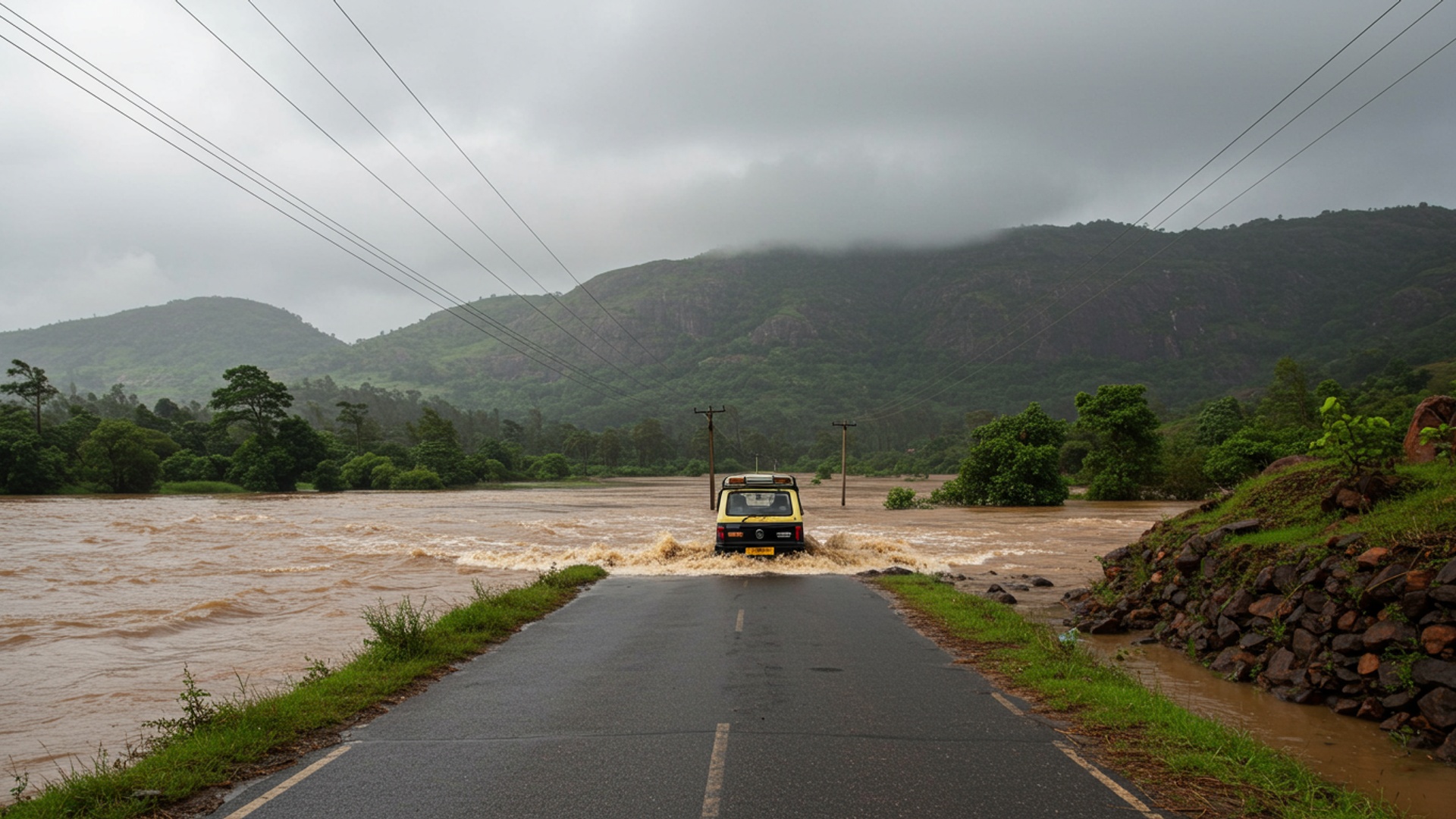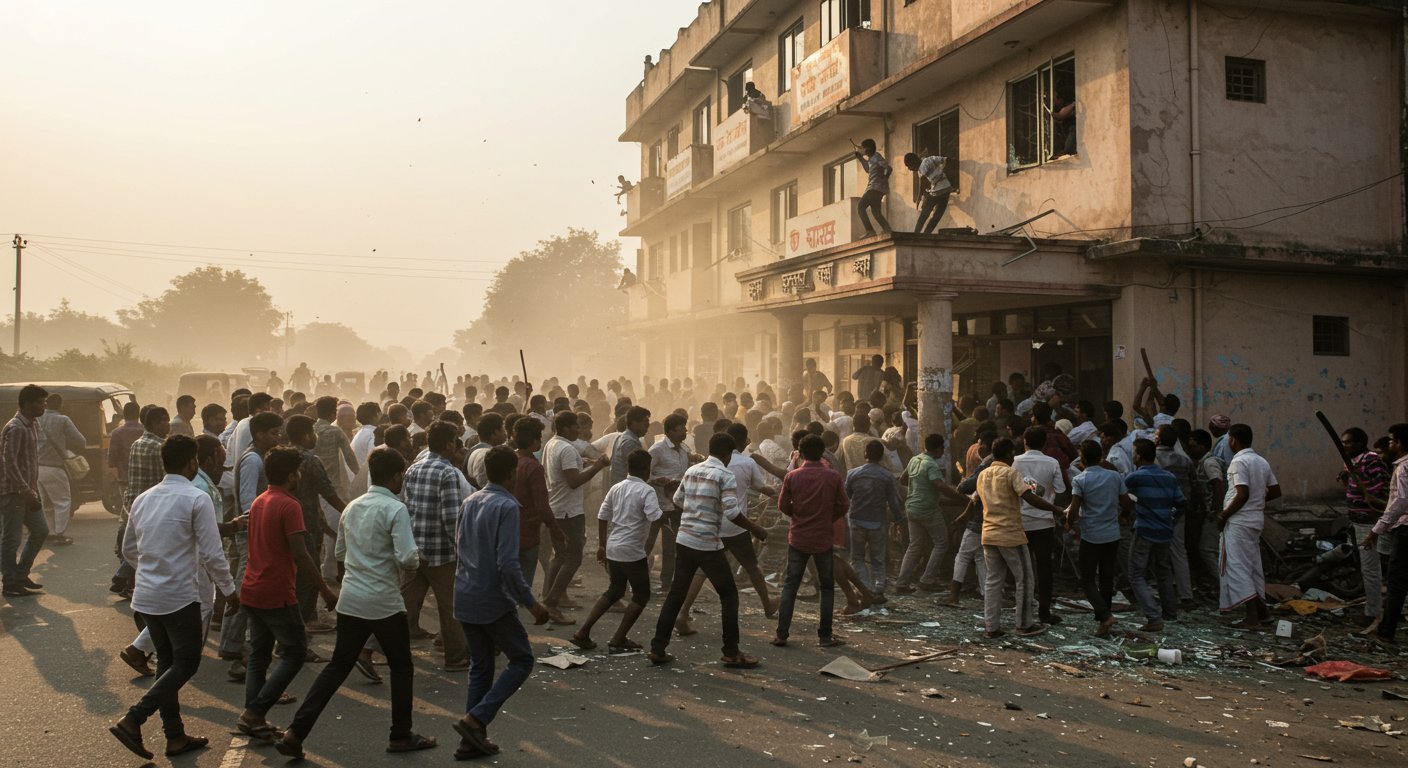Life grinds to a halt in the Malnad Region as relentless torrential rains batter the area, prompting authorities to issue a critical red alert. Streets turn into rivers, homes face the immediate threat of flooding. transportation ceases, leaving many stranded. This sudden and severe weather event displaces families and causes widespread damage across the region. With the weather office predicting more heavy downpours in the coming hours, the situation remains extremely dangerous, as emergency teams race against time to help those caught in the rising waters.
Current Situation in Malnad Region
The Malnad region in Karnataka is currently facing severe challenges due to relentless and heavy rainfall. The India Meteorological Department (IMD) has issued a red alert for several districts within the region, including Shivamogga, Chikkamagaluru, Kodagu, Hassan, Dakshina Kannada, Udupi. Uttara Kannada. This alert signifies a high probability of extremely heavy rainfall, defined as over 204. 5 mm, which can lead to major disruptions and dangerous situations.
For instance, some areas have recorded exceptional rainfall in short periods. Hulikal in Shivamogga district received a massive 270 mm of rain in a 24-hour period. Similarly, Begar village in Sringeri taluk of Chikkamagaluru district recorded 204. 5 mm, while Shantalli saw 200 mm of rain in just 24 hours. The continuous downpour has caused rivers to swell rapidly, with water levels rising above danger marks in many places. The Tunga river, for example, is flowing above danger level in Thirthahalli and Shivamogga, with parts of Sringeri town also submerged.
“The continuous downpour has made conditions very difficult across Malnad. Our teams are on standby to respond to any emergencies. We urge everyone to follow the safety guidelines issued by local authorities,” stated a representative from the State Disaster Response Force, emphasizing the critical nature of the situation.
The severity of the rainfall has led to widespread waterlogging in both urban and rural areas. Many low-lying regions have reported heavy flooding, making normal life difficult. Authorities have been forced to declare holidays for schools and colleges in several affected districts like Chikkamagaluru, Shivamogga. Kodagu to ensure the safety of students and staff.
Impact on Daily Life and Infrastructure
The relentless rainfall has severely impacted the daily lives of people across the Malnad region. Transportation networks have been heavily disrupted, with numerous roads becoming impassable. Landslides have been reported on major routes, including National Highway-75, Agumbe Ghat. Shiradi Ghat, leading to significant delays and cutting off connectivity to remote villages. Road closures due to waterlogging, tree falls. submerged culverts are common. In one instance, railway services were halted near Edakumari due to landslips on the tracks.
Beyond roads, essential services have also suffered. Power outages are widespread in many parts of the region due to uprooted electricity poles and damaged power infrastructure. Several houses have been damaged, some completely destroyed. others partially. Reports indicate damage to public infrastructure, including bridges, culverts, schools. even a primary health center.
- Road closures due to waterlogging and landslides on key highways and local roads.
- Disruption of public transport and essential supply chains.
- Widespread power outages affecting communication and daily routines.
- Significant damage to homes and public buildings across affected districts.
- Farmers facing severe crop losses due to waterlogging, fruit fall. rot disease, particularly for paddy, coffee. areca nut.
The farming community, a cornerstone of Malnad’s economy, is facing dire consequences. Standing crops like paddy, coffee. areca nut are at high risk of damage from prolonged waterlogging. Farmers are also concerned about the spread of rot disease and fruit fall due to the persistent rain, which could lead to substantial financial losses. The agriculture department is closely monitoring the situation to assess the full extent of the damage.
Government Response and Relief Operations
The state government has initiated a rapid response to manage the crisis and provide aid to those affected by the torrential rains. Emergency response teams, including the National Disaster Response Force (NDRF) and State Disaster Response Force (SDRF), have been deployed to the most vulnerable areas. These teams are equipped with necessary tools, including boats, for rescue operations. District administrations are working tirelessly to monitor water levels in all major rivers and reservoirs, such as Linganamakki, Harangi, Hemavathi, Almatti, Bhadra, Krishna, Cauvery. Kabini, to manage water release and prevent further flooding downstream.
“We are closely watching the situation and have activated all necessary response mechanisms. Our priority is the safety of our citizens. Relief camps have been set up. we are ensuring food and basic needs are met for those who have been moved to safer places,” affirmed a senior official from the district administration, highlighting the government’s commitment.
Relief camps have been established in various parts of the affected districts. Thousands of people living in low-lying areas or those whose homes are at risk have been evacuated and moved to these camps. These facilities provide temporary shelter, cooked food, clean drinking water. basic medical care. Local volunteers and non-governmental organizations are actively assisting the administration in these relief efforts, offering crucial support and comfort to the displaced families.
In addition to direct relief, the government has issued a series of advisories to the public. These include warnings about avoiding travel to hilly regions, staying away from riverbanks. refraining from attempting to cross flooded roads or bridges. Residents are strongly advised to keep emergency supplies ready, protect essential documents. stay updated with official announcements from local authorities. A specific helpline number (08262-238950) has been provided for emergencies in Chikkamagaluru district.
Ongoing Challenges and Future Outlook
The continuous heavy rainfall in the Malnad region presents several ongoing challenges. A significant concern remains the heightened risk of landslides, particularly in the hilly terrains of Kodagu, Chikkamagaluru. Shivamogga districts. The saturated soil in these areas is highly unstable, making it prone to slides that can block critical roads and endanger lives. Multiple minor landslides have already been reported, leading to temporary road closures. teams are working to clear these blockages.
Managing the increasing water levels in dams and reservoirs is another critical task. While the monsoon rains are essential for water resources, excessive inflows necessitate regulated water releases, which, if not carefully managed, could exacerbate flooding in downstream communities. Authorities are coordinating these releases with vigilance, ensuring that timely warnings are issued to villages located downstream.
| District | IMD Alert Level (as of Aug 17-18, 2025) | Reported Impacts (examples) |
|---|---|---|
| Chikkamagaluru | Red Alert | Roads inundated, power outages, landslides, school holidays, crop damage. |
| Shivamogga | Red Alert | Tunga river above danger mark, widespread flooding, tree falls, power disruptions. |
| Kodagu | Red Alert | Heavy rainfall, power outages, house damage, submerged temples, increased river levels, fatalities. |
| Hassan | Orange Alert | Road damage, landslides, Hemavathi river rising. |
The India Meteorological Department forecasts that the red and orange alerts will likely remain in effect for the next few days, particularly until August 20. This points to heavy rainfall conditions are expected to persist. While some decrease in intensity might follow, residents are advised to maintain vigilance and continue adhering to safety precautions. Recovery efforts, including infrastructure repair and long-term support for affected communities, will commence in full once the weather conditions improve. The immediate focus remains squarely on ensuring public safety and providing relief during this critical period.
![]()












